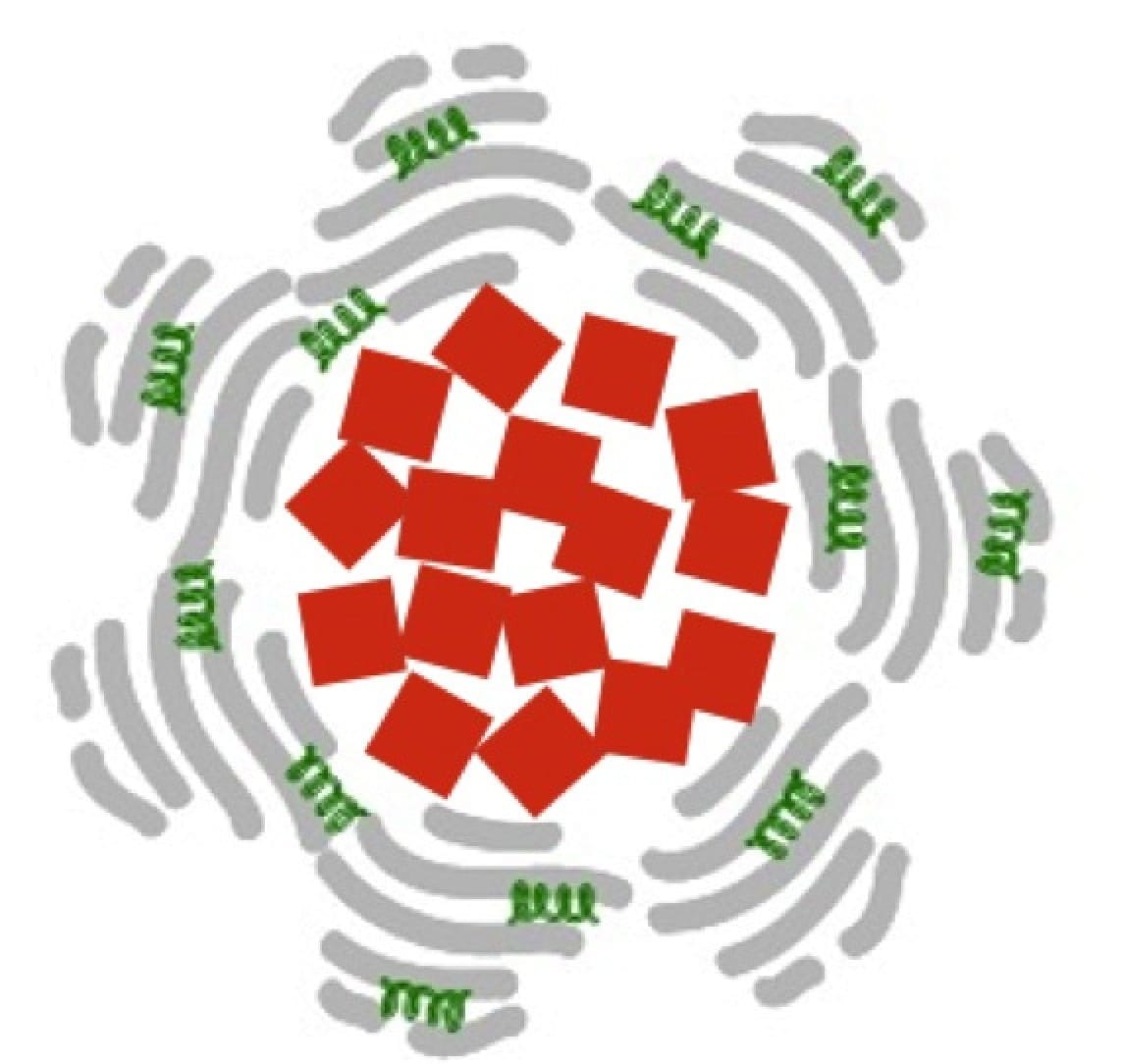
Scientists in Italy and France are pioneering the use of nanomaterials in compact, sensitive, extremely fast, low-cost terahertz detectors with tremendous potential in applications such as biomedical diagnostics, airport security screening and high data-rate wireless communication
Compact, sensitive and fast nanodetectors are considered to be somewhat of a “Holy Grail” sought by many researchers around the world. And now a team of scientists in Italy and France has been inspired by nanomaterials and has created a novel solid-state technology platform that opens the door to the use of terahertz (THz) photonics in a wide range of applications.
During the past decade, materials research has played an essential role in filling the THz gap, beginning with the development of THz quantum cascade lasers, which rely heavily on semiconductor heterostructured artificial nanomaterials. The development of THz spectroscopy, nanospectroscopy and THz imaging expanded the range of powerful tools for the characterization of a broad range of materials — including one-dimensional or two-dimensional semiconductors, biomolecules and graphene.
The missing piece? A complementary detection technology capable of fulfilling THz application-oriented needs in fields such as biomedical diagnostics, security, cultural heritage, quality and process controls, and high data-rate wireless communications that require ad hoc integrated generation and detection systems.
As the scientists report in the journal APL Materials, from AIP publishing, by using an approach that exploits the excitation of plasma waves in the channel of field-effect transistors (FET), they were able to create the first FET detectors based on semiconductor nanowires, designed in a plethora of architectures — including tapers, heterostructures and metamaterial-antenna coupled. While they were at it, they also developed the first THz detectors made of mono- or bi-layer graphene.
“Our work shows that nanowire FET technology is versatile enough to enable ‘design’ via lithography of the detector’s parameters and its main functionalities,” explained Miriam Serena Vitiello, lead author of the paper as well as research scientist and group leader of Terahertz Photonics Group in the Nanoscience Institute at CNR and Scuola Normale Superiore in Pisa, Italy.
What’s the nanowire detector capable of? It offers “a concrete perspective of application-oriented use, since it operates at room temperature — reaching detection frequencies greater than 3 THz, with maximum modulation speed in the MHz range, and noise equivalent powers that are already competitive with the best commercially available technologies,” Vitiello said.
In terms of applications, because the nanodetectors can be tapped for large-area fast imaging across both the THz and the sub-terahertz spectral ranges, don’t be surprised to see them commercialized in the near future for a variety of spectroscopic and real-time imaging applications — possibly even in the form of fast multi-pixel THz cameras.
Read more: Novel Solid-State Nanomaterial Platform Enables Terahertz Photonics
The Latest on: Terahertz Photonics
[google_news title=”” keyword=”Terahertz Photonics” num_posts=”10″ blurb_length=”0″ show_thumb=”left”]
via Google News
The Latest on: Terahertz Photonics
- Laser Photonics Secures Order From L3Harris Technologies for LaserTower Marking & Engraving Systemon April 9, 2024 at 12:28 am
ORLANDO, Fla.--(BUSINESS WIRE)--Laser Photonics Corporation (LPC) (NASDAQ: LASE), a leading global developer of industrial laser systems for laser cleaning and other material processing ...
- IPG Photonics: Laser Business Has Lost Its Laser Focuson March 27, 2024 at 2:48 am
IPG Photonics has experienced stagnant sales and declining margins in recent years, leading to a challenging outlook for the company. The company's first quarter sales are expected to decline by ...
- Revolutionising Terahertz Wave Manipulation: A Leap in Imaging and Communication Technology.on February 19, 2024 at 12:05 am
The method, published in ACS Photonics, could lead to advances in medical imaging, communications, and other applications that rely on broadband terahertz pulses. In the realm of optics ...
- IPGP IPG Photonics Corporationon February 13, 2024 at 5:08 am
IPG Photonics Corporation develops, manufactures, and sells various high-performance fiber lasers, fiber amplifiers, and diode lasers used in various applications primarily in materials processing ...
- Physicist advancing skin cancer screening and diagnosis using terahertz waveson February 9, 2024 at 11:30 am
Her latest research is published this week on the Advanced Photonics Nexus. Unlike X-rays, terahertz radiation is non-ionizing; unable to pass through water, it does not harm tissues within the body.
- Mid-Infrared and Terahertz Quantum Cascade Laserson June 15, 2023 at 7:52 am
Discover how mid-infrared and terahertz photonics has been revolutionized in this comprehensive overview of state-of-the art quantum cascade lasers (QCLs). Combining real-world examples with expert ...
- Challenges In Photonics Testingon April 10, 2023 at 4:59 pm
Photonics is poised for significant growth due a rapid increase in data volumes and the need to move that data quickly and with minimal heat. But to reach its full potential photonics will have to ...
- RIKEN Center for Advanced Photonics (RAP)on March 24, 2023 at 12:14 am
metamaterials are allowing us to manipulate the spectrum and terahertz light will open up new undreamt of technologies. The work of the RIKEN Center for Advanced Photonics focuses not simply on making ...
- Terahertz technologies explainedon February 7, 2023 at 8:49 am
Terahertz electromagnetic waves occupy a middle ground between electronics waves, like microwave and radio waves, and photonics waves, such as infrared and UV waves. For example, mobile phones use ...
via Bing News




